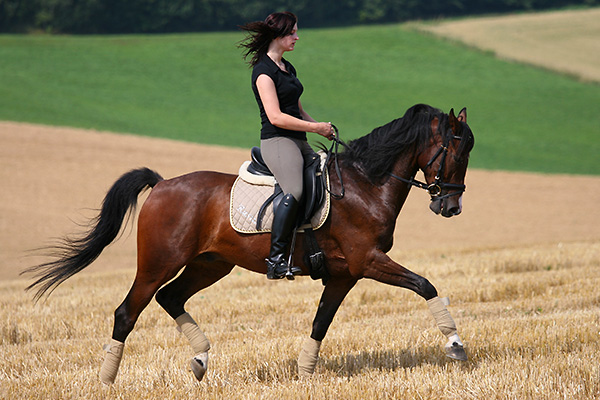Posting or Sitting Trot – Which is Better?
Equestrians generally believe that posting is better than sitting while trotting, as it puts less strain on the horse's back.
New research techniques now enable scientists to evaluate whether such commonly held assumptions are indeed true.
Using methods for evaluating horse movement in three dimensional detail, researchers compared the effects of riding a horse at a sitting versus a rising trot. Their results challenge conventional wisdom.
The back, head and neck motions of a dozen Dutch Warmbloods were measured while trotting without a rider, and with a rider sitting or posting. Compared with no rider, carrying someone sitting the trot caused a horse to extend its back more, that is the angles between vertebrae opened up.

Horses carry their heads higher while trotting if their rider sits instead of posting.
During a posting trot, the back responded in ways similar to both sitting and unloaded trotting. The horse's back extended as in a sitting trot, while it also flexed, or vertebra angles decreased, to the same amount as without a rider. Finding that a horse extends its back equally, regardless of whether its rider sits or posts, shows there's only partial truth to a posting trot being any less harmful to a horse's back, this study's authors conclude.
How a horse carried its neck and head while trotting also varied with how it was ridden. At a rising trot, horses held their head lower than when with a rider sitting, or without a rider. As well, the horse's total range of lateral bending motion was greater with a rising trot compared to the other situations. This indicates that posting while trotting may offer advantages for training of lateral movements, such as for dressage.
Reference
P. de Cocq, H. Prinsen, N.C.N. Springer, P.R. van Weeren, M. Schreuder, M. Muller and J.L. van Leeuwen. 2009. The effect of rising and sitting trot on back movements and head-neck position of the horse. Equine Veterinary Journal. 41.